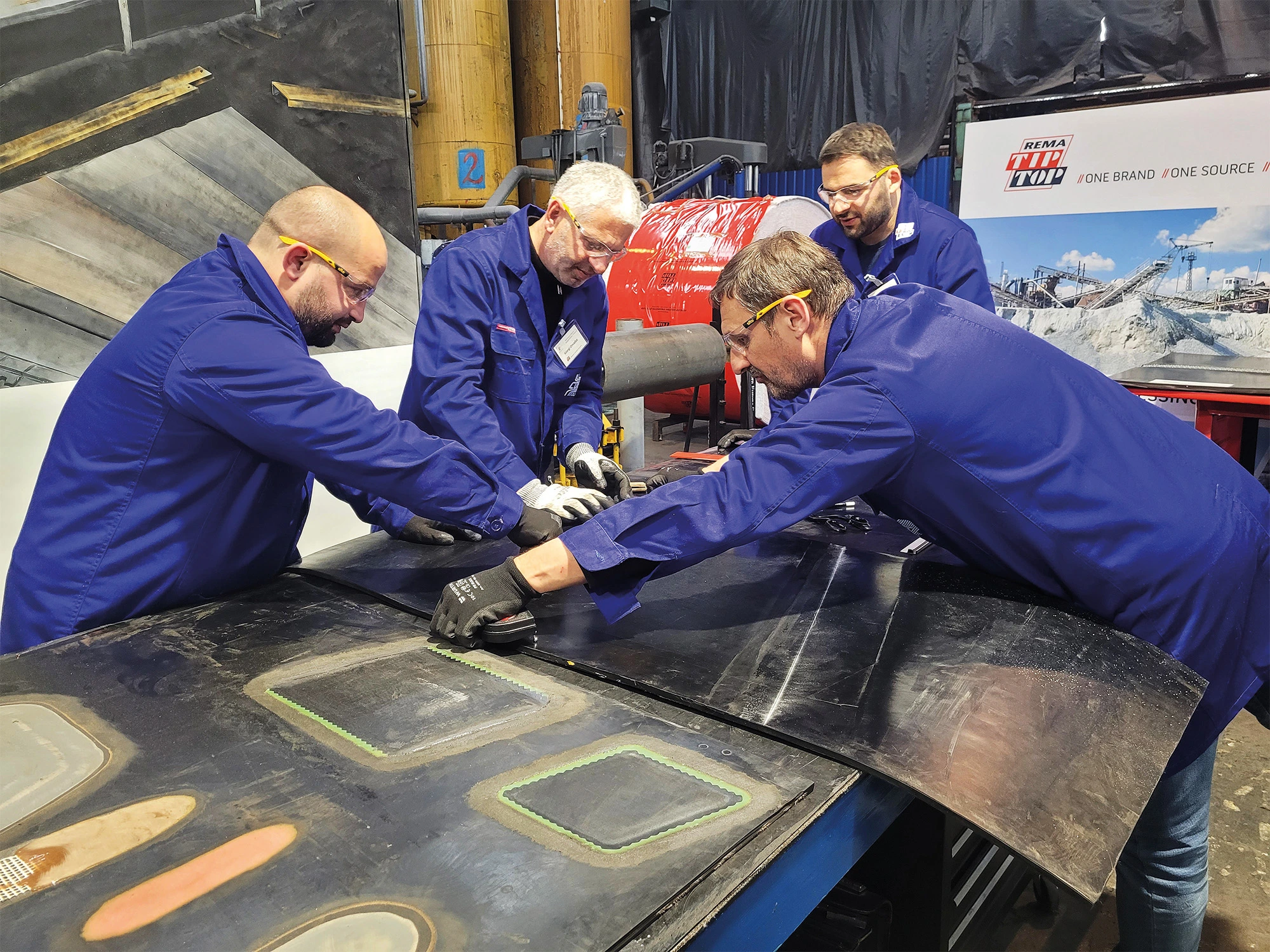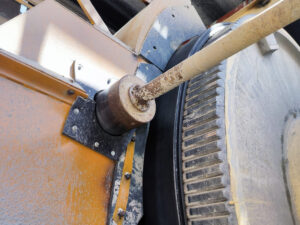Poing near Munich, 18th August – In conveyor technology, conveyor belts are essential for the safe and efficient transport of materials. The professional splicing of belt ends is crucial to performance. Whether the splicing is mechanical, cold-bonded, or vulcanized: The quality of this endless splice significantly impacts the operational safety, ease of maintenance, and cost-effectiveness of a conveyor system. Henryk Myrzik has worked as a conveyor technology expert at REMA TIP TOP for nearly 20 years. In this interview, he discusses the most important aspects of professional belt splicing and shares insights on proven processes.
Mr. Myrzik, could you please explain what is meant by the term "splicing" in the context of conveyor belts?
MYRZIK: "Splicing" is a high-quality technique for joining conveyor belts. This technique is used when installing a new conveyor belt or replacing a damaged section. The type of conveyor belt determines the splicing method used. Here are two examples: Hot vulcanization is used to securely splice two sections of steel cord belts. For fabric belts with several plies, however, a cold process can be used.
Both processes aim to ensure a uniform thickness of the belt structure along its entire length. This significantly reduces mechanical loads during the conveying process, such as those from scraper systems. As a result, the belts and other components have a longer service life. The basis for this is the use of so-called stepped or finger splices. With finger splices, the prepared ends of the belt layers interlock—comparable to the interlocking fingers of two hands. When placed on top of each other in opposite directions, they create a wide, stable connection zone that enables homogeneous force transmission.
In what ways does a professionally executed splicing process contribute to the safety and efficiency of a conveyor system?
MYRZIK: A professional splicing process benefits the safety and efficiency of a conveyor system in several ways. For example, if the conveyor belt is damaged by wide cracks, it does not need to be replaced entirely. Not only does an insert save costs, it is also sustainable. Additionally, such a repair usually takes less time. This means that the time during which the conveyor belt cannot be used is shorter than if a new order has to be placed. However, it is important that splices are carried out professionally because a poor splice can cause the conveyor belt to tear. Consequently, not only can conveyed goods be lost, but people and the system structure can also be damaged.
What are the different splicing methods?
MYRZIK: There are three main methods: mechanical bonding, hot vulcanization, and cold vulcanization. Mechanical bonding is only suitable as a temporary solution. We recommend hot vulcanization, cold splicing, or cold bonding. In hot vulcanization, the ends of the belt are joined using heat and pressure with the help of a vulcanizing press. This process can be used with all belt types. However, there are exceptions if the belts are very small or narrow, in which case a vulcanizing press cannot be used. In this case, cold splicing is the right choice. Here, two belt parts are joined together using special adhesives. It is important to strictly adhere to the curing times.
How long does a professional splicing of conveyor belts take?
MYRZIK: Of course, this depends heavily on the strength and width of the belt, the size of the team, and the local conditions. Larger connections take around 24 hours, while smaller ones take around four hours. Cleanliness is a key success factor, though it is not always easy to maintain in the close proximity of conveyor belt systems. On average, splicing the belt ends on these systems takes two shifts. During the first shift, the surfaces are prepared, sanded, and cleaned. During the second shift, the conveyor belt ends can be assembled and vulcanized.
How do you recognize high-quality work, and what characteristics do you look for?
MYRZIK: These processes require extensive experience with different materials and selecting
the right ones. Additionally, the specified processing and curing times must be followed
precisely. For instance, if the temperature is incorrect during vulcanization, the joints may open
again after just a few weeks. Another indicator of quality is the absence of bubbles after
vulcanization.
öffnen. Zudem erkennt man die Qualität daran, dass sich nach der Vulkanisation keine Blasen bilden.
How durable are belt splices?
MYRZIK: As a general rule, the splices last as long as the belt — typically eight years. We continuously test the quality of our splicing materials and their adherence to standard specifications in the laboratory. Our results are 40 percent higher than the standard specifications, and our material has a longer storage life compared to that of other manufacturers. Each joint is labeled to show when and by whom it was created, so the joint's age can be checked at any time. Additionally, the MCUBE system from REMA TIP TOP helps system operators detect damage before it occurs and causes failures through live monitoring.
Does REMA TIP TOP offer customer training courses on professional conveyor belt splicing?
MYRZIK: Yes, our customers' qualifications are very important to us. We regularly offer training courses at our customers' premises around the world, including in Germany, the Middle East, Chile, and Brazil. We have teams around the world to support customers in maintaining their conveyor systems in the best possible way, ensuring sustainable and cost-efficient operation. There are also two permanent training locations in Poland: For textile belts, it is COBRA Europe, which is part of the REMA TIP TOP Group. For steel cord belts, training takes place at REMA TIP TOP Service, the Polish subsidiary.



